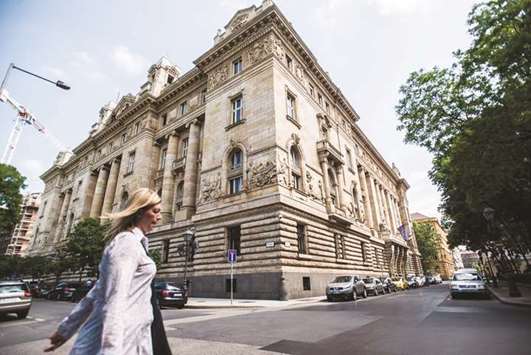Hungary’s central bank left its main policy instruments unchanged as it seeks to boost lending by extending to the real economy its success in steering financial markets.
Policy makers kept interest rates unchanged, as expected, and vowed to keep financing conditions loose for an extended period to help inflation return to the target by mid-2019. The Monetary Council is starting a new campaign to convince companies, households and banks that now’s the time to invest.
“The Council will closely monitor developments in monetary conditions and will ensure the persistence of loose monetary conditions over a prolonged period,” rate setters said in a statement after the meeting.
While financial markets have fallen in line with the central bank’s ultra-dovish stance, it’s proven more difficult to overcome memories of a freewheeling lending boom that helped push families and companies to the brink of default in the last decade. Some investors see the latest round of unconventional easing started in January as having an insufficient impact so far.
“The National Bank of Hungary will likely fine-tune the programme soon,” Mai Doan, an analyst at Bank of America Corp said in a note to clients before the rate announcement.
“The effective profit transfer from the central bank to local banks since January has not been productive.”
Lending growth still lags the 15% needed each year until 2030 to support a catch-up with the country’s more affluent neighbours in the euro area, central bank Deputy Governor Marton Nagy said last week.
The forint weakened 0.1% to 312.55 per euro as of 3:27 p.m. after suffering its biggest daily decline in six months on Monday as emerging-market currencies slid on the back of rising US Treasury yields. Hungary’s 10-year yield was little-changed at 2.55%.
Policy makers left the three-month deposit interest rate at a record-low 0.9% for a 23rd month and the overnight deposit rate at minus 0.15% yesterday, matching the estimates of all economists in Bloomberg surveys.
The economic backdrop is supportive of policy makers’ efforts to spur borrowing. Inflation last month returned to the lower end of the target range set by the central bank, which predicts annual price growth will reach the 3% mid-point in the middle of 2019.
Monetary authorities across the European Union’s east have scaled back tightening promises and Prime Minister Viktor Orban’s thumping election victory this month has reassured investors that the nation will maintain a prudent budget policy.
“Hungary’s central bank will lag peers with any tightening in the future as it seeks to boost lending in a broader part of the economy and at lower costs,” David Nemeth, an economist at KBC Groep NV’s Hungarian unit, said in e-mailed comments. “There’s little sign of any intention to tighten.”

A pedestrian passes the Hungarian central bank building in Budapest. Hungary’s policy makers kept interest rates unchanged and vowed to keep financing conditions loose for an extended period to help inflation return to the target by mid-2019.
